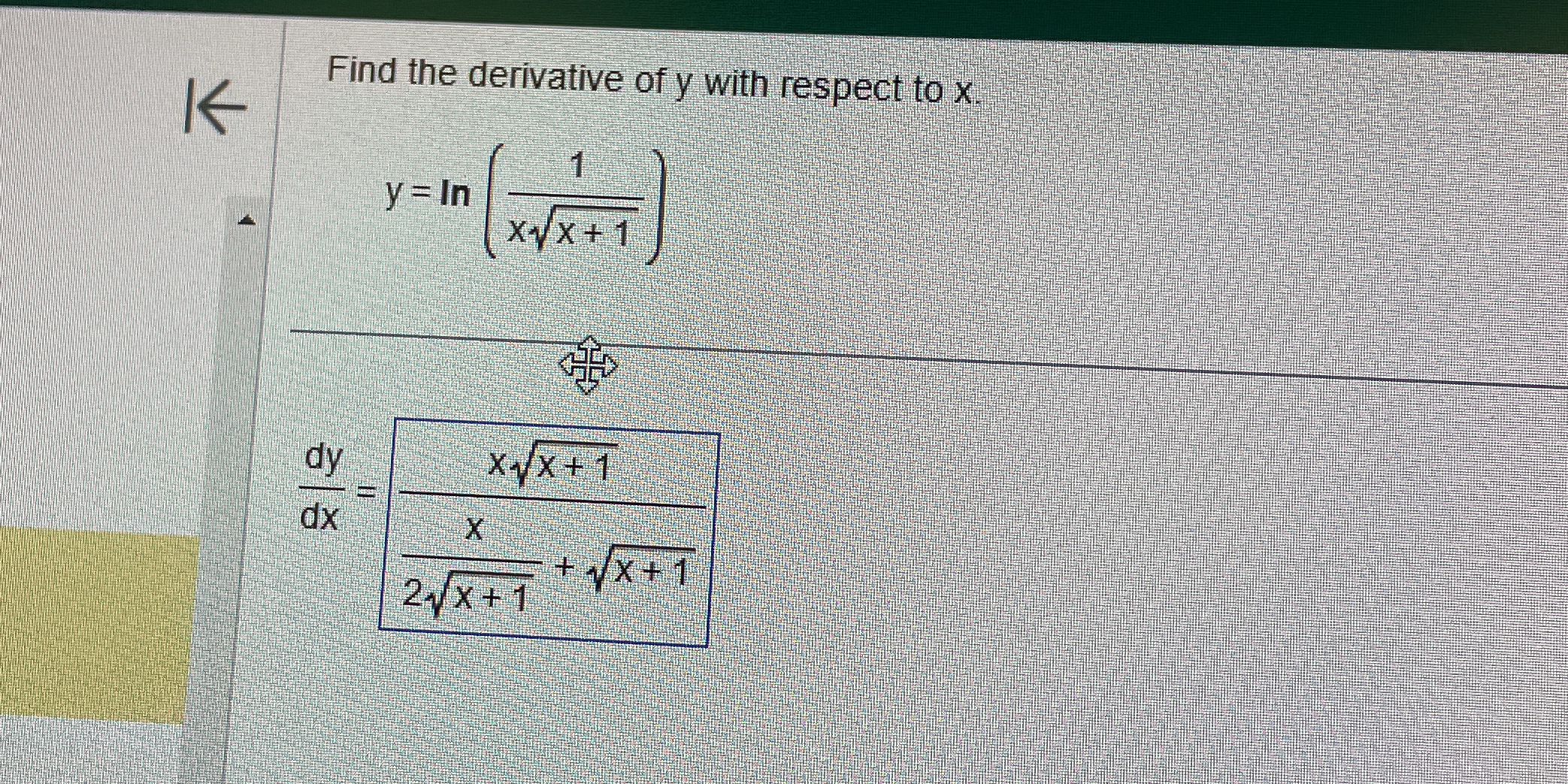Find the derivative of y with respect to x, where y = ln(1 / (sqrt(x) / (x + 1))).

Understand the Problem
The question is asking to find the derivative of a given function with respect to x. This involves applying differentiation rules to the logarithmic function and the expression inside it.
Answer
The derivative is: $$ \frac{dy}{dx} = \frac{-\frac{x + 1}{2x} + \frac{2x}{x + 1}}{(x + 1)} $$
Answer for screen readers
The derivative of ( y ) with respect to ( x ) is:
$$ \frac{dy}{dx} = \frac{-\frac{x + 1}{2x} + \frac{2x}{x + 1}}{(x + 1)} $$
Steps to Solve
-
Rewrite the function
Start with the function for clarification:
$$ y = \ln \left(\frac{1}{\frac{\sqrt{x}}{x + 1}}\right) $$
This can be rewritten using properties of logarithms:
$$ y = \ln(1) - \ln\left(\frac{\sqrt{x}}{x + 1}\right) $$
Since $ \ln(1) = 0$:
$$ y = -\ln\left(\frac{\sqrt{x}}{x + 1}\right) $$ -
Apply the logarithm rule
Use the quotient rule of logarithms:
$$ y = - \left(\ln(\sqrt{x}) - \ln(x + 1)\right) $$
This can be further simplified:
$$ y = - \left(\frac{1}{2} \ln(x) - \ln(x + 1)\right) $$
Thus,
$$ y = -\frac{1}{2} \ln(x) + \ln(x + 1) $$ -
Differentiate the function
Now, differentiate $y$ with respect to $x$:
Using the derivative rules:
$$ \frac{dy}{dx} = -\frac{1}{2} \cdot \frac{1}{x} + \frac{1}{x + 1} $$ -
Combine the fractions
To combine the two terms, find a common denominator:
$$ \frac{dy}{dx} = -\frac{1}{2x} + \frac{1}{x + 1} = \frac{-\frac{1}{2x}(x + 1) + \frac{1}{x + 1}(2x)}{(x + 1)} $$
Simplify:
$$ \frac{dy}{dx} = \frac{-\frac{x + 1}{2x} + \frac{2x}{x + 1}}{(x + 1)} $$
Which can be further simplified for the final expression.
The derivative of ( y ) with respect to ( x ) is:
$$ \frac{dy}{dx} = \frac{-\frac{x + 1}{2x} + \frac{2x}{x + 1}}{(x + 1)} $$
More Information
This derivative showcases the rules of logarithmic differentiation and how to manipulate logarithmic expressions effectively.
Tips
- Forgetting to apply the logarithmic identities correctly.
- Misapplying the quotient rule or chain rule during differentiation.
- Neglecting to simplify the final expression.
AI-generated content may contain errors. Please verify critical information